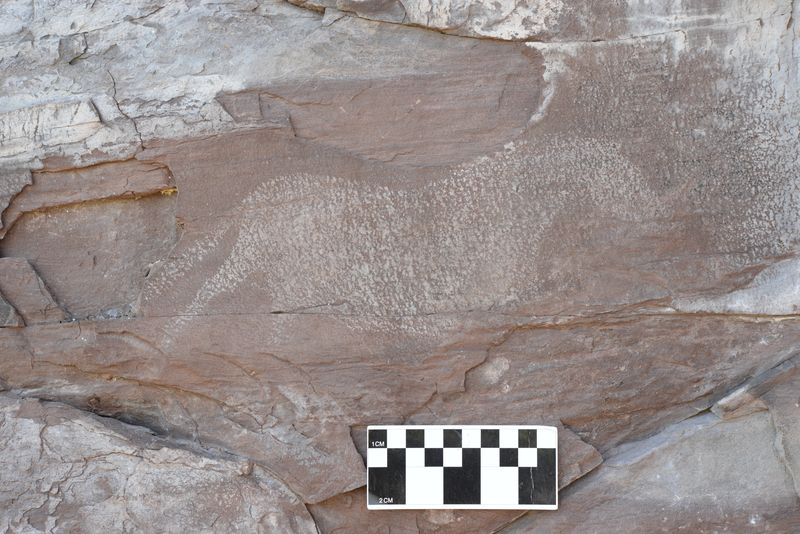White horse
Description
The panel is represented by a single image of a horse located in the center. The image is silhouette.
The sizes: general length - 28.5 cm; length from withers to chest - 16 cm; height - 12 cm. The animal's body is wide, massive, shortened (as Equus ferus przewalskii has). The neck is wide, massive, and short. It is slightly turning into the body. The back line is slightly concave. The croup is rounded moderatly. In the upper part, we can see a darker spot (probably, blanket or saddle - ?). The tummy is convex. The head is wide and short, slightly pushed forward. It has a massive and round lower jaw. We can also see a horse's eye - round dark spot where traces of drip were removed. In the profile, we can clearly see an ear of triangular shape slightly pushed forward. We can clearly see a mane. Hind legs are widely spaced (in step or leap). In the thigh area, the legs are connected with each other by a dotted trace line. The tail is very long. There are no front legs.
On the horse's nose, there is a horn (like a rhino has) made with wiping with a piece of rock a sandstone surface devoid of limescale. It indicates a later element.
Initially, the image was attributed to the Paleolithic era based on stylistic analysis and paleoastronomical calculations [Larichev, 1992; Molodin, 1999]. Based on the dating of the limescale, the image cannot be made earlier than 4.5 thousand years BP.
Technical description
The panel with the image is vertical. It is exposed to the east. The surface of reddish-brown Devonian sandstone is smooth. We can see some cracks along the edges. There are no traces of erosion processes. The panel is located in the non-deep recess that was made, presumably, deliberatly. There are no lichens. The panel is covered with strips of grey-brown limescale.
Epoch
- Bronze age
Method
- Rubbing (scraping) with carbonate slate on sandstone
Style
- Classic
